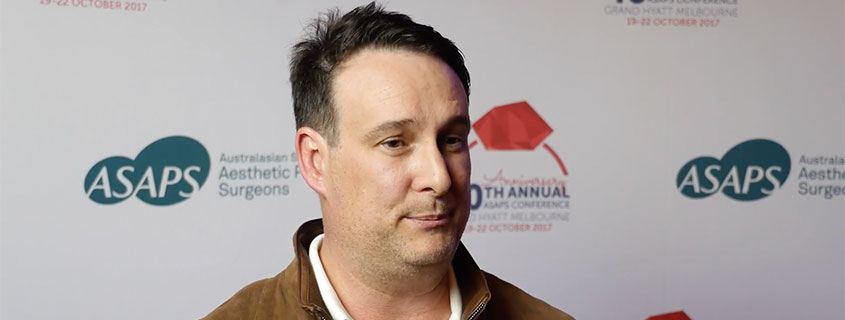
I sat down with Dr Nicholas Moncrieff at the recent 40th Annual ASAPS conference in Melbourne and asked him about tuberous breasts – a quite common issue for women (and men!). He answered all my questions. Check out my video with him here.
What is a tuberous breast?
Dr Moncrieff: So a tuberous breast is a congenital abnormality of breast development and it can actually affect women and men, and it affect one or both breasts. Basically, during puberty, breast development is affected, or blocked, such that the normal breast doesn’t develop fully and maturely. We don’t know, really, why it happens. But it’s probably been around, will have been classified since the mid-1970s. Basically, the physical characteristics are the patients often present with sort of big, puffy nipples or areolas; they have usually very widely spaced breasts, and they have very short distance from the nipple down to the breast fold, and the breast fold is often very high. It’s not, really, just a simple thing that the breast hasn’t developed fully and normally, it’s actually, as I said, an abnormality with the mature breast shape.
Why doesn’t just putting in an implant work?
Look, because often there’s a problem with the nipple, or the areola, which is as I said, often puffy, it’s often displaced, or moved sort of towards the outer part of the breast. So we often have to move the nipple, centrally, and also reduce the size of the breast. There’s also these bands, fibrous bands, that are going through the breast, that we have to release, so it’s not just a standard, simple breast augmentation.
What causes it?
As I said, it’s not really known. But basically, they’ve found a problem with collagen deposition, in both women and men who suffer from this condition, and so it’s something related to that. You know, in the womb, when the breast is developing, and it’s actually, the breast doesn’t develop completely. But it’s actually really unknown why it happens.
How can a proper BA address it?
Okay, so it’s a combination of usually incision around the nipple, to access some of the glandular elements of the breast. So releasing the fibrous bands, or ring, if you’d like. Then, using very shaped implants, which I use to really shape the rest of the breast. Because you can actually change the shape of the breast by using these high-cohesive gel implants, that really change the shape of the breast. That’s a combination of, usually, a lift, or like a mastopexy with an incision at the bottom, doing a standard breast augmentation, can really give you the results that most women are after.
But we’re really starting to use anatomical shaped implants, because they’re bigger at the bottom than the top, and they can really shape the bottom of the breasts, because that’s where a lot of the problem is. You know, they’ve got this high fold and we often have to drop the inferior mammary fold, and then these really height projecting implants to get that great breast shape. Especially from the cleavage, through the inferior mammary fold, up to the lateral cleavage line. So yeah, that’s really been at the forefront of treating tuberous breasts, is these anatomical shaped implants.
To find out more about Dr Nicholas Moncrieff at Hunter Plastic Surgery visit his website, or check out his listing and blogs on PSH. You can also phone him on 02 4920 7700.
